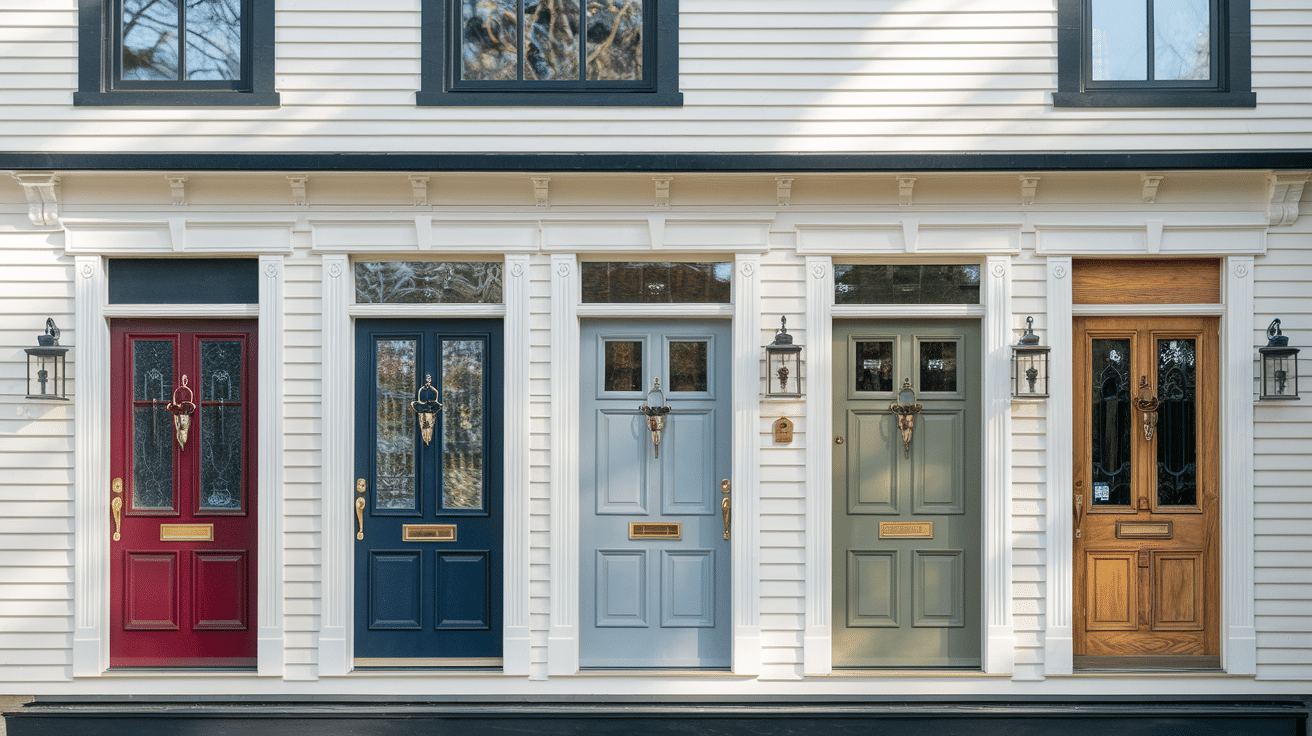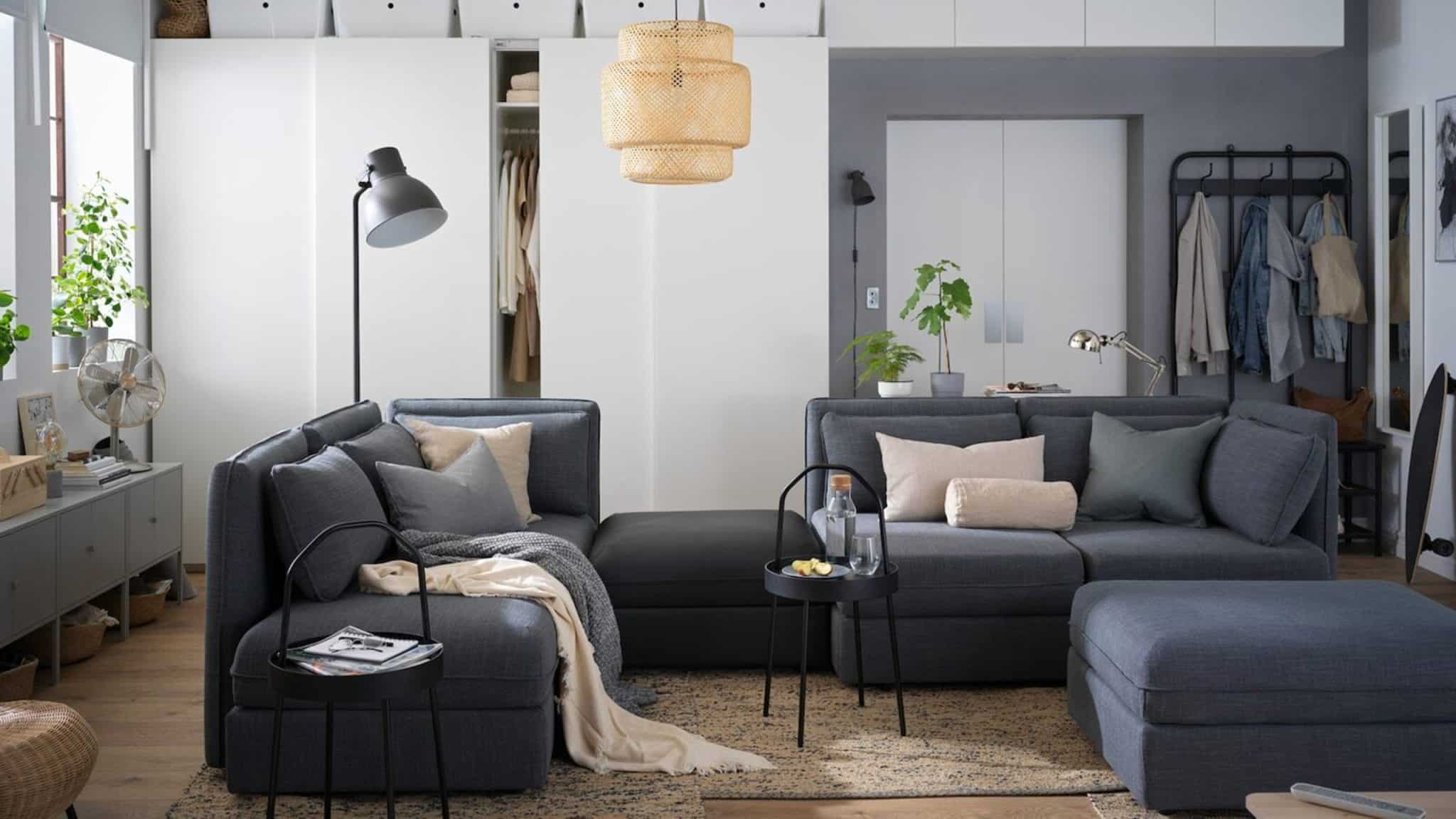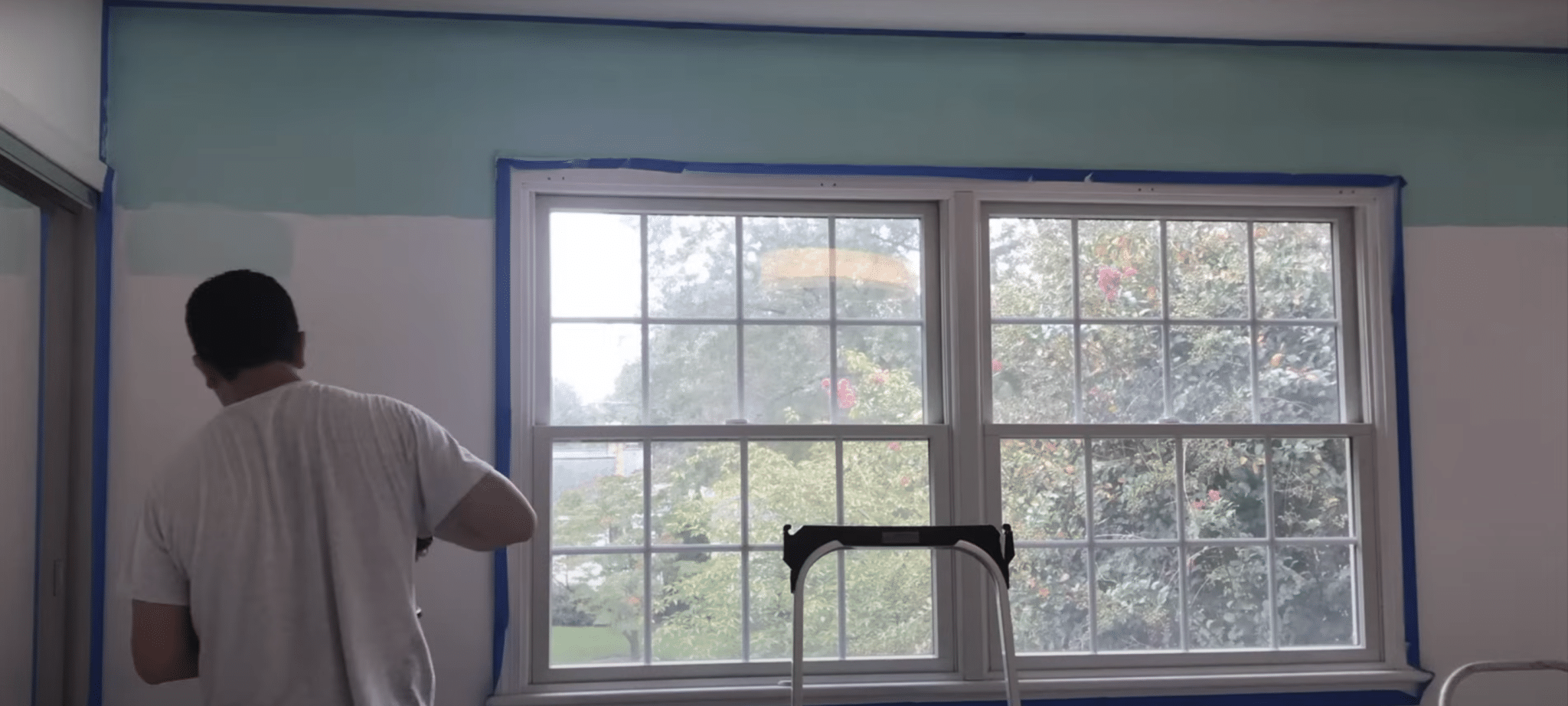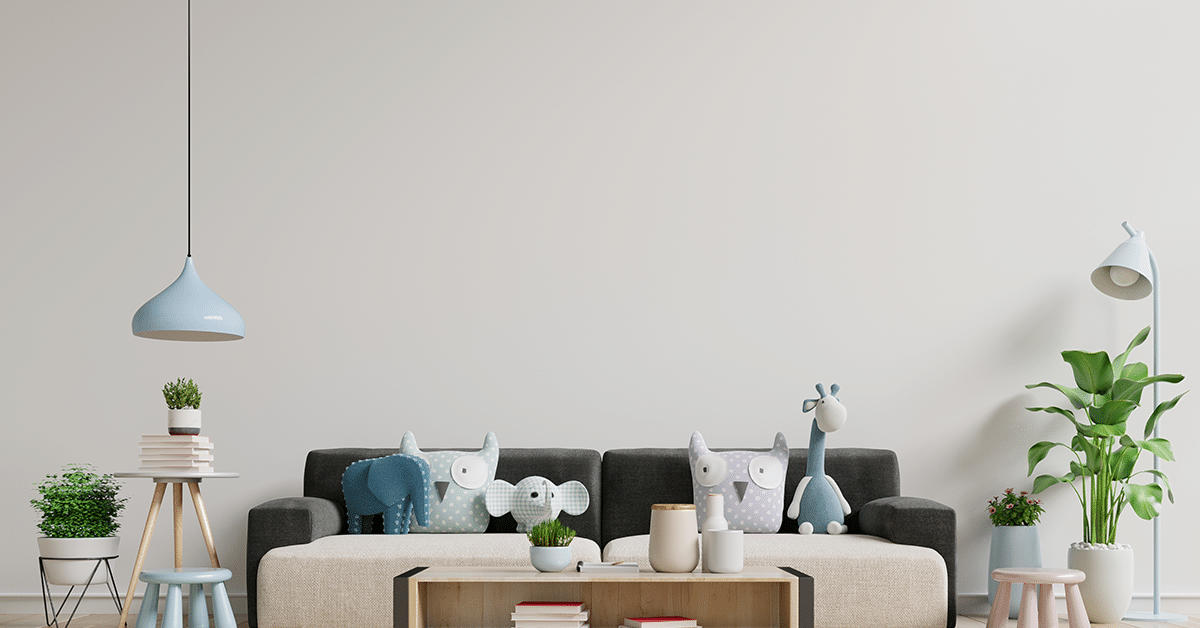10 Front Door Colors for White House with Black Trim
Have you ever walked past a house and felt like it was smiling at you?
Sometimes, it’s the front door that makes that happen. For white homes with black trim, the door isn’t just an entrance, it’s where your home shows a bit of heart.
Maybe you’ve seen a bold red door that made a place feel cheerful. Or a calm blue that seemed to say, “Welcome home.”
Your front door is the first thing people see, and it sets the mood for everything behind it. The color you choose says something about you, even if it’s quiet.
This guide can help you find a shade that feels right every time you walk up to your door.
Front Door Colors for White House With Black Trim
Choosing a front door color is more than just picking what looks good. It involves thinking about how the color works with your home’s overall look, fits with your neighborhood, and holds up in your local weather.
The right color can make your white house look more balanced and put-together. It should match your home’s character while also showing your personal taste.
A good door color choice can boost your home’s value and make it more noticeable in a good way.
Architectural Style of Your House
Different house styles work better with certain colors. Look at your home’s overall style before picking a color.
- Georgian and Federal-style homes often suit black or deep red doors that match their formal nature.
- A colonial home might look best with classic colors, while a modern house can handle bolder choices.
- Craftsman homes work well with earth tones like forest green that complement their natural materials.
- Ranch-style homes are flexible and can work with almost any color.
- Victorian houses support richer colors like plum or teal that match their detailed trim work.
- Mid-century modern homes often look good with bright, clear colors against their clean lines.
Looking at homes similar to yours can give you useful ideas that will feel right with your home’s design.
Personal Preference vs. Neighborhood Trends
While you should choose a color you love, it’s smart to notice what works in your area.
Take a walk around your neighborhood to see what colors look good on similar houses. You don’t need to copy others, but you can get helpful ideas.
Your personal taste matters most since you’ll see your door every day. Being aware of local patterns helps your home feel connected to its surroundings while still showing your style.
Some neighborhoods have similar color schemes that create a unified feel. In historical districts, there might be rules about acceptable door colors based on the time period of the homes.
If you’re planning to sell soon, more neutral door colors typically appeal to more buyers. Colorful doors can make houses more memorable to potential buyers during house hunts.
Climate Considerations
Your local weather affects how long the paint lasts.
In sunny areas, some colors fade faster. In wet places, certain paints might need more upkeep. Talk to your local paint store about which products work best in your climate.
Homes in coastal areas face salt spray and humidity, which can cause paint to bubble or peel more quickly. In these spots, high-quality marine-grade paints often work better.
For houses in hot, sunny climates, darker colors absorb more heat and might fade faster. Light colors reflect heat but show dirt more easily in rainy regions. Cold northern climates with freeze-thaw cycles need flexible paints that won’t crack.
The direction your door faces also matters – south and west-facing doors get more sun and might need UV-resistant paint. Many brands now offer climate-adapted formulas for different regions.
Front Door Colors for White House With Black Trim
Choosing the right front door color can make a white house with black trim stand out in a good way.
The contrast gives you a clean base to work with, and a bold or soft color can add just the right touch. Your choice can highlight your home’s style or bring a bit of warmth to the exterior. It all depends on the mood you want your home to share.
1. Classic Red
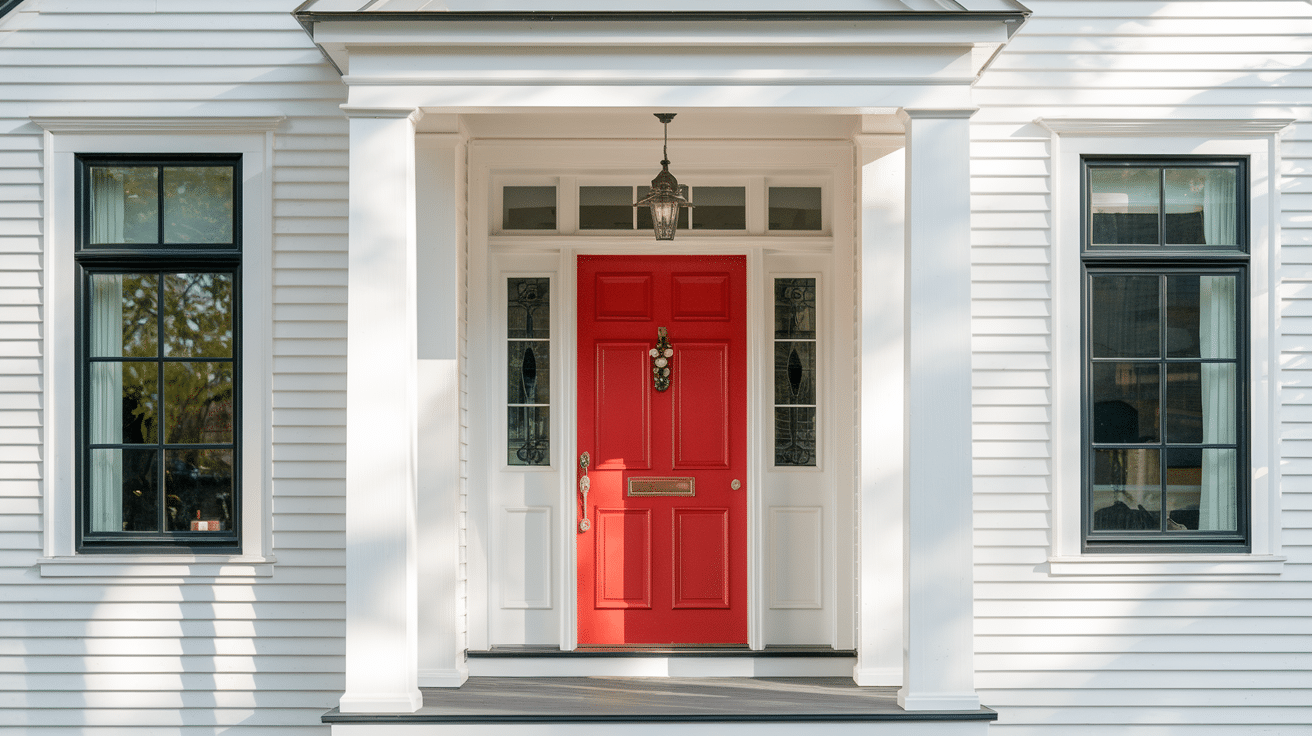
A red door brings warmth and energy to a white house. It’s friendly and makes your entrance easy to spot.
Red creates strong contrast with white walls, making your home more noticeable from the street. This color has historical meaning in many cultures – in American tradition, it often means “welcome.”
The boldness of red works well in all seasons and can make a small house seem more substantial.
During winter months, red doors look especially inviting against snow-covered landscapes.
Ideal Styles: Works well with colonial, craftsman, and farmhouse styles.
Finish Options: Semi-gloss gives a nice shine without showing every scratch. Full gloss makes a bold statement but shows imperfections.
Maintenance Tips: Clean with mild soap and water. Touch up any chips quickly to prevent peeling.
2. Navy Blue
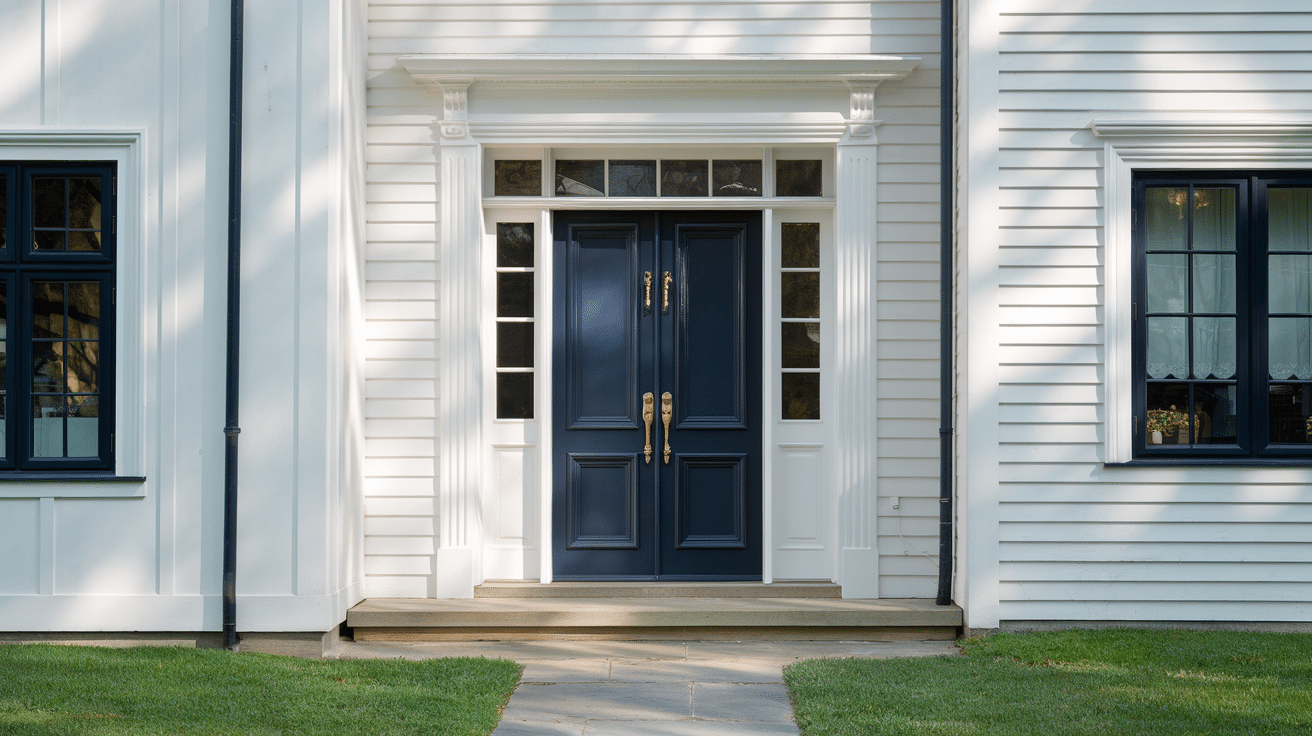
Navy brings a sense of calm and stability. It’s formal without being stuffy. This deep color has roots in maritime tradition and pairs wonderfully with brass hardware for a classic look.
Navy creates a stately entrance that feels both timeless and current. The color works in all lighting conditions and doesn’t show dirt readily.
Navy also helps smaller entryways feel more significant and grounded. It’s a smart choice for homes with American flags or red and white accents elsewhere in the landscaping.
Ideal Styles: Perfect for Cape Cod, colonial, and coastal homes.
Finish Options: Satin finish balances between too shiny and too flat, hiding minor flaws while still looking fresh.
Maintenance Tips: Check for fading every few years, especially if your door gets direct sunlight.
3. Forest Green
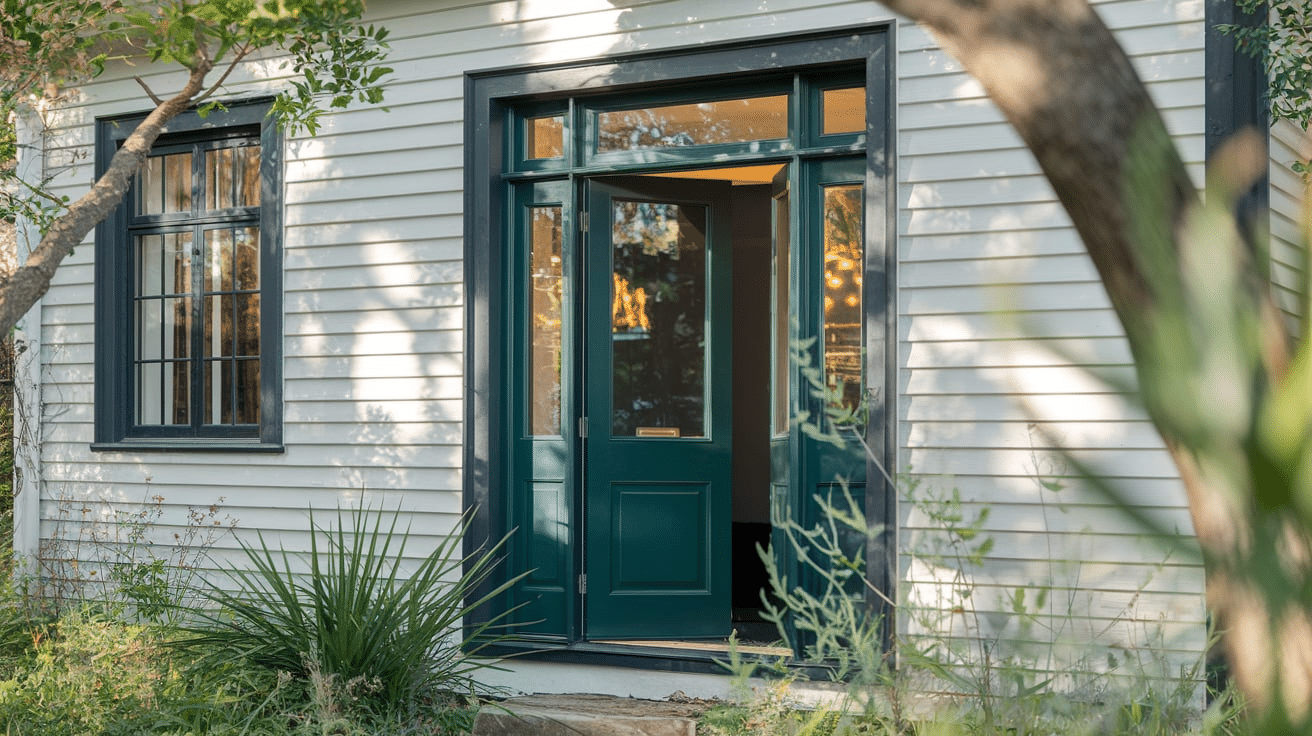
Green connects your home to nature and creates a peaceful feeling. This rich, deep shade brings the calming effect of woodlands to your entrance.
Forest green works particularly well for homes with lots of plants or trees nearby, creating a smooth visual flow from yard to house. It’s less common than red or blue, giving your home a distinct look.
The color changes subtly throughout the day as light shifts, sometimes appearing almost black in shadow and bright green in full sun. It pairs beautifully with stone accents and natural wood trim.
Ideal Styles: Tudor, craftsman, and country-style homes.
Finish Options: Matte finishes can make green look more natural, while glossier options add depth.
Maintenance Tips: Wash twice yearly with a gentle cleaner to prevent dirt buildup in textured areas.
4. Bright Yellow
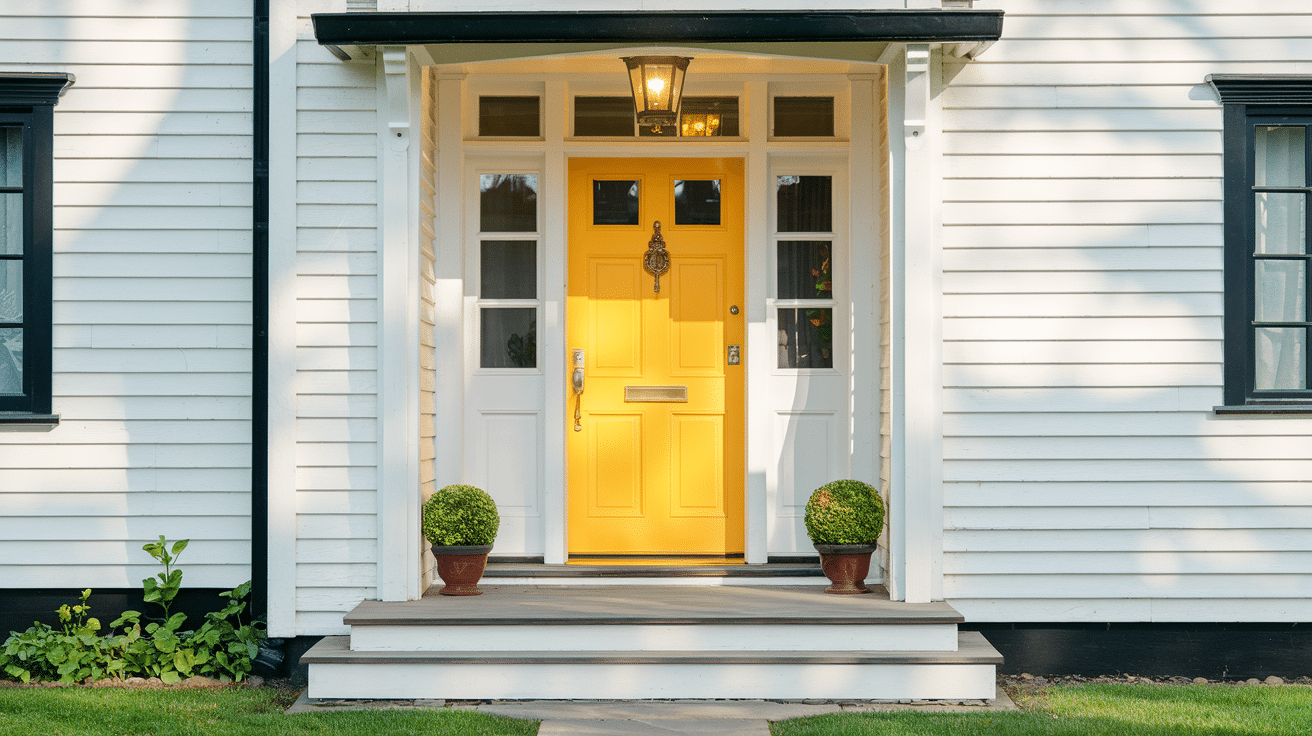
Yellow brings sunshine and happiness to your entrance. It’s friendly and approachable. This cheerful color stands out clearly against white walls and creates an instant mood boost for anyone coming to your home.
Yellow doors catch morning light beautifully and seem to glow in late afternoon sun.
The color is said to stimulate conversation and bring good energy to a home. It pairs well with gray or black hardware for a modern look.
Yellow works well in neighborhoods with strict color guidelines since it’s bright but still considered a classic choice.
Ideal Styles: Cottage, modern, and Mediterranean homes.
Finish Options: Semi-gloss helps yellow stay bright longer.
Maintenance Tips: Yellow shows dirt easily, so clean regularly. Expect to repaint sooner than darker colors.
5. Black
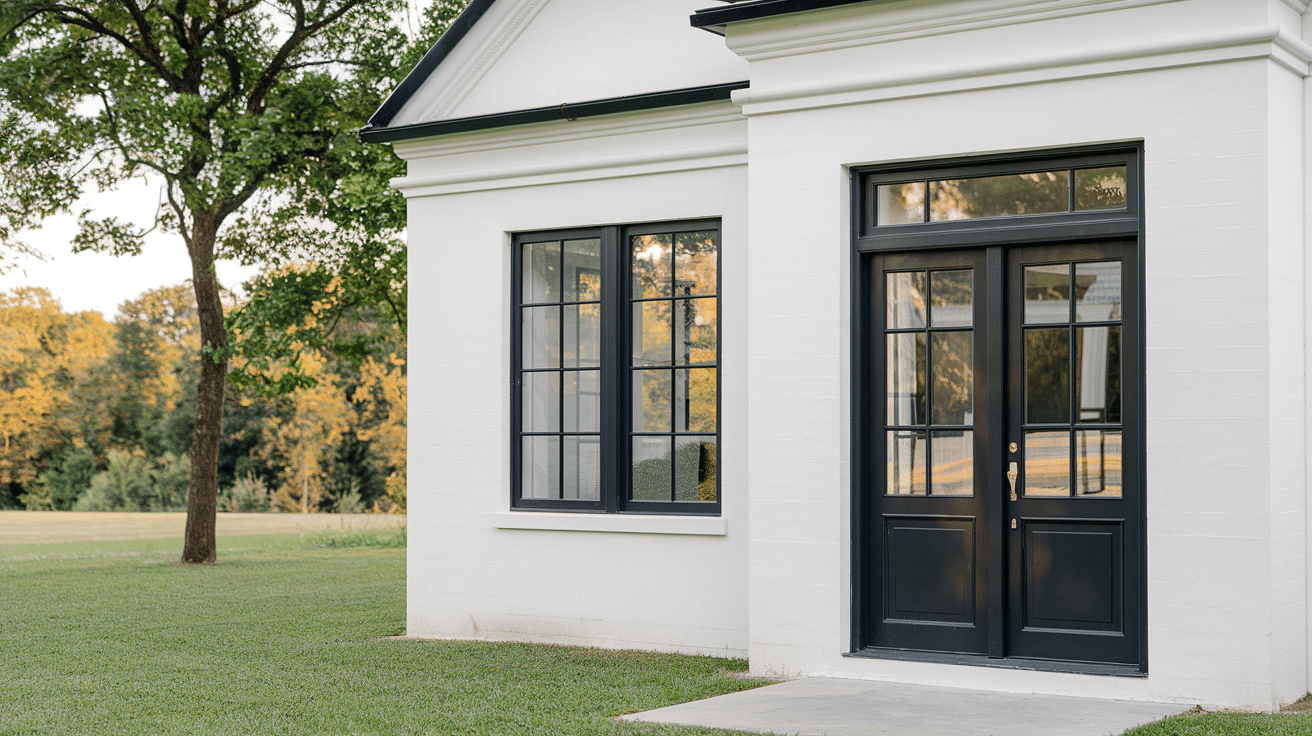
Black doors are classic and sophisticated. They create a sharp contrast with white walls. This timeless choice has been popular for centuries across many architectural styles.
Black makes a clear statement and pairs with any hardware finish from polished brass to brushed nickel.
The color absorbs heat in winter (helpful in cold climates) and creates a focal point that draws the eye directly to your entrance.
Black looks good in all seasons and tends to hide minor dents or dings better than lighter colors. It creates a sense of weight and importance to the entry point of your home.
Ideal Styles: Works with almost any style from traditional to ultra-modern.
Finish Options: High gloss black creates a mirror-like finish that’s very striking.
Maintenance Tips: Wipe down often as dust and fingerprints show easily on black.
6. Turquoise
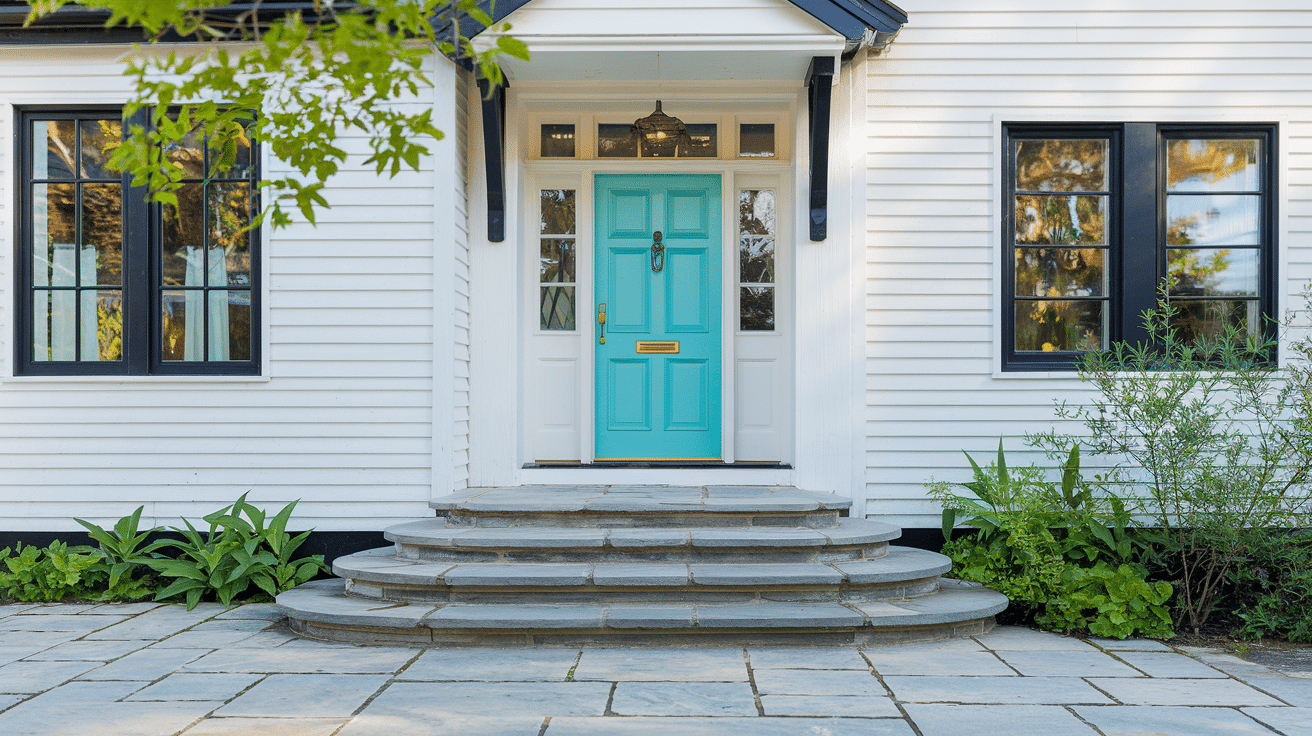
Turquoise is fresh and unique without being too wild. This blue-green shade calls to mind tropical waters and clear skies. It’s happy but not childish, making it suitable for family homes that want some personality.
Turquoise creates a cool, inviting entrance in hot climates and brings warmth to northern homes.
The color stands out in photos and makes your home easy to identify for first-time visitors. It works particularly well with natural stone walkways and succulents in your landscaping.
Turquoise has cultural significance in many southwestern traditions as a color of protection.
Ideal Styles: Beach houses, southwestern, and mid-century modern.
Finish Options: Satin or semi-gloss maintains the color’s vibrancy.
Maintenance Tips: It may fade in strong sunlight, so consider adding an awning for protection.
7. Charcoal Gray
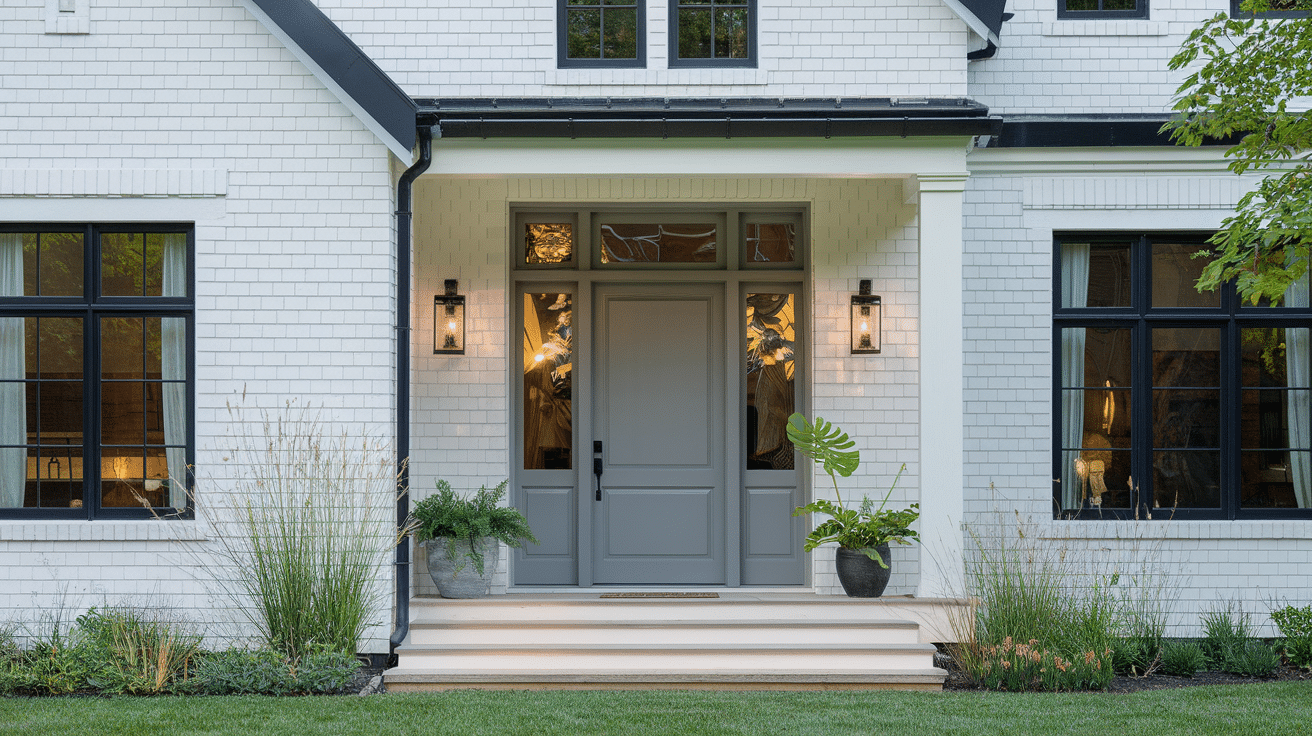
Gray is modern and subtle. It’s a good middle ground if black seems too dark. Charcoal has depth that changes with the light, sometimes looking nearly black, other times showing blue or brown undertones.
This versatile color works with any hardware finish and complements both warm and cool color schemes in your landscaping.
Gray reads as current without trying too hard, and it hides dirt well. It’s practical for busy households where the door gets frequent use.
Charcoal works well in both urban and rural settings, looking equally at home among city buildings or country fields.
Ideal Styles: Contemporary, transitional, and minimalist homes.
Finish Options: Matte to satin work well with gray, giving it a smooth, current look.
Maintenance Tips: Easy to maintain with occasional cleaning.
8. Deep Purple
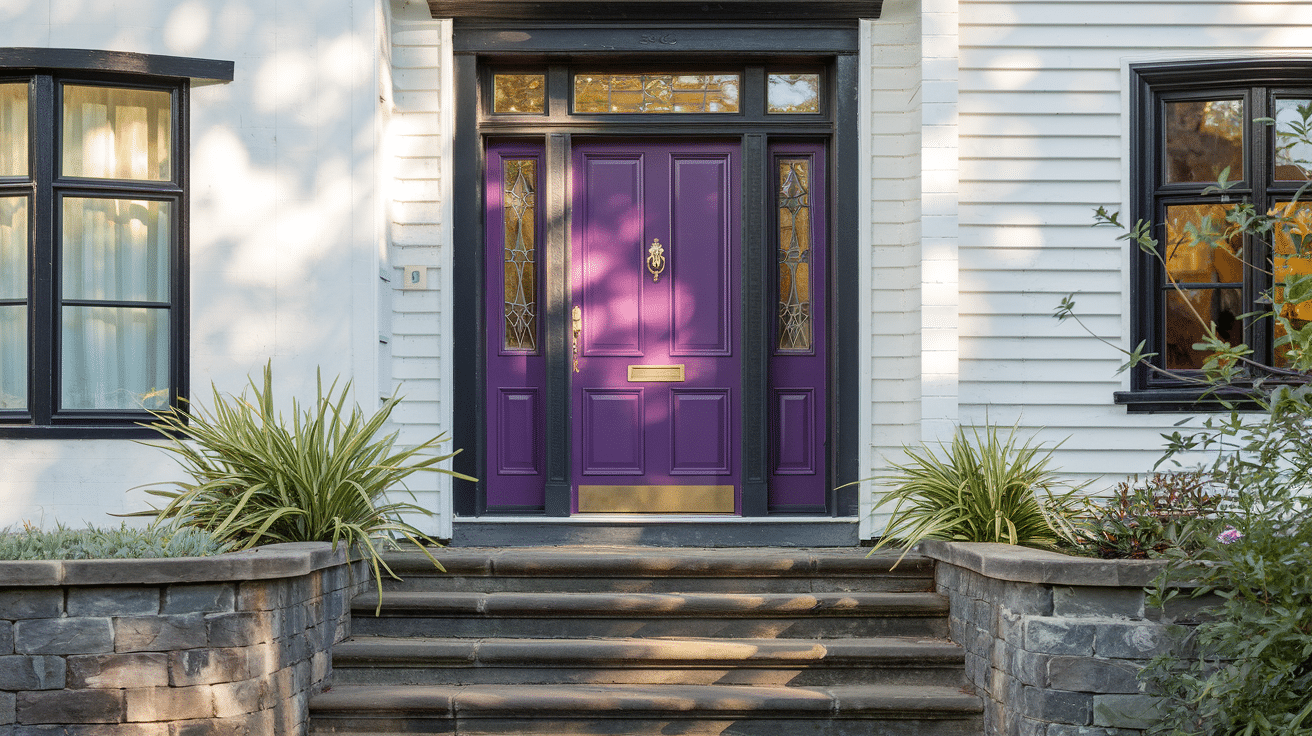
Purple adds richness and character. It’s different but not too bold. This royal shade has historical connections to wealth and creativity.
Deep purple doors create a sense of depth against white walls and make a subtle statement about the homeowner’s willingness to try something different.
The color picks up gold and brass hardware beautifully. Purple works well in both sunny and shady locations, with northern light bringing out its blue tones and southern exposure highlighting red undertones.
It’s both classic and unusual – a combination that makes your home stand out in a tasteful way.
Ideal Styles: Victorian, eclectic, and arts and crafts homes.
Finish Options: The Satin finish helps show the depth of the purple.
Maintenance Tips: May need more frequent touch-ups to maintain its rich color.
9. Teal
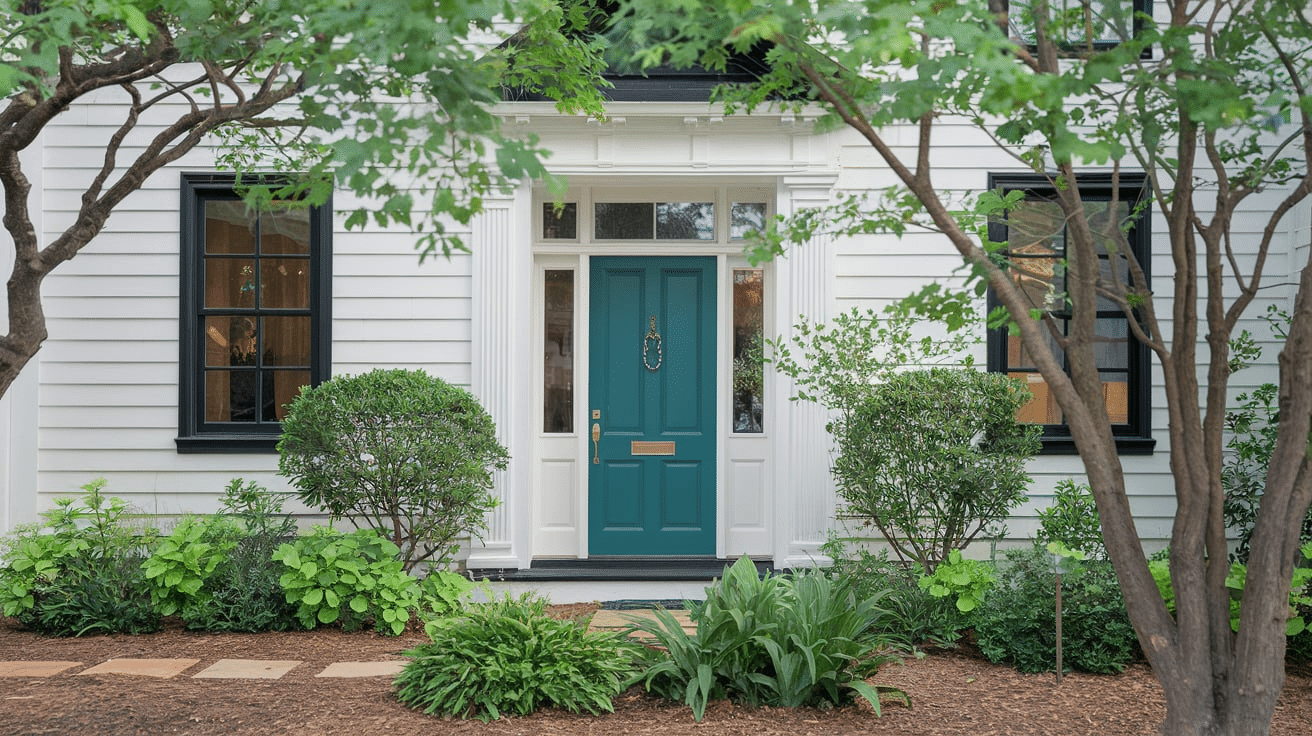
Teal combines blue’s calm with green’s natural feel. This rich color pulls from both sky and sea, creating a balanced, peaceful entrance.
Teal appears different throughout the day – more blue in morning light, greener at midday. It’s both eye-catching and soothing.
The color pairs well with natural materials like wood and stone. Teal stands out nicely against white walls without being too loud, making your entrance noticeable but not showy.
It’s also a good choice for homes with copper accents or light fixtures, as the patina of aged copper complements teal beautifully.
Ideal Styles: Coastal, craftsman, and contemporary homes.
Finish Options: Semi-gloss helps teal pop against white walls.
Maintenance Tips: Clean regularly and watch for color changes in sunny spots.
10. Coral
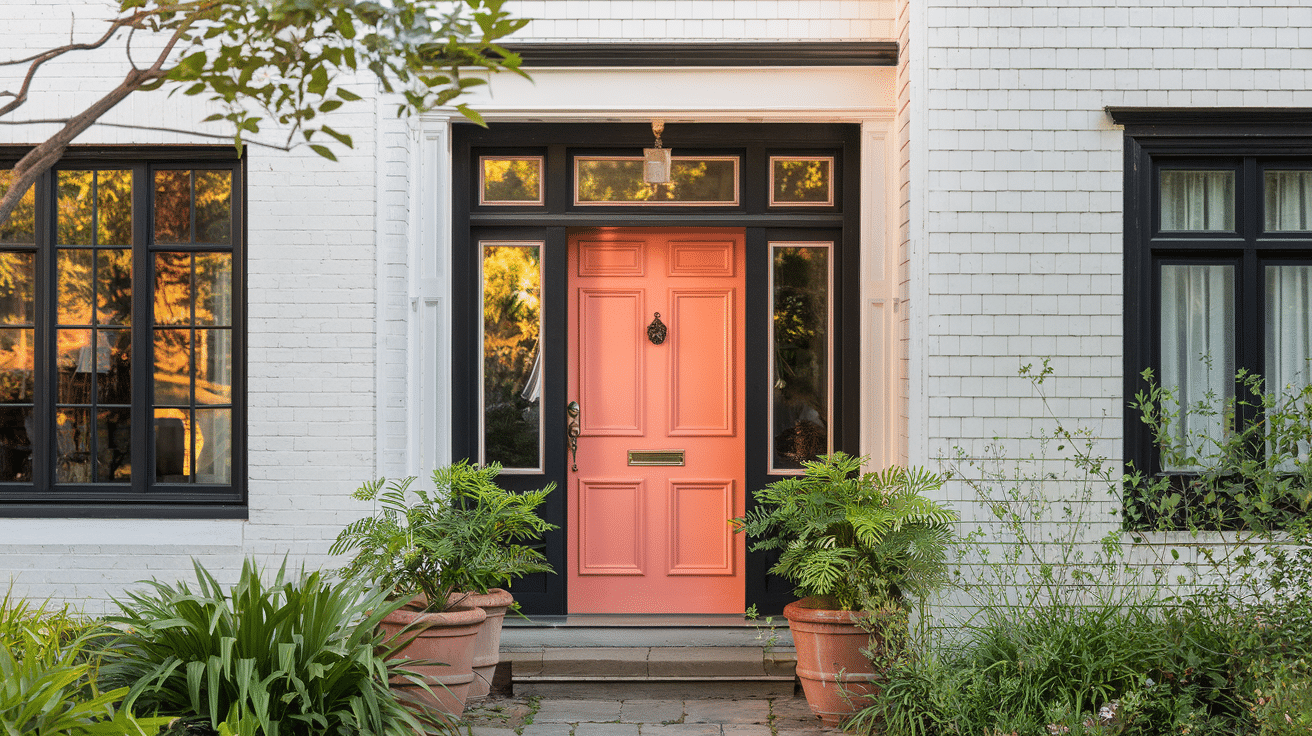
Coral is friendly and warm without being as intense as red. This peachy-pink tone brings softness and light to your entrance. It’s happy and welcoming but still grown-up enough for any home.
Coral looks amazing in golden hour light and brightens up north-facing entrances that don’t get much direct sun.
The color works wonderfully with homes that have terra cotta roof tiles or planters.
Coral has a casual, relaxed feel that puts visitors at ease. It photographs well and helps your home look inviting in online listings or social media posts.
Ideal Styles: Florida-style homes, beach cottages, and Spanish styles.
Finish Options: The Satin finish helps coral look rich rather than candy-like.
Maintenance Tips: May fade in strong sun; consider repainting every 3-4 years.
What Your Front Door Color Says About You
The color you pick can send a message.
- Red doors often suggest a place of welcome.
- Blue doors hint at calm and stability.
- Yellow shows optimism.
- Black suggests order and control.
Color experts show that these impressions happen quickly and can affect how people feel about your home before they even step inside.
Studies have found that homes with thoughtfully colored doors can sell faster and sometimes for more money than similar homes with basic white or brown doors.
Practical Tips for Picking the Perfect Shade
The right color for your front door depends on many factors beyond just personal taste.
A color that looks great in a paint store might look completely different on your actual door.
Light changes how colors appear throughout the day, so what seems perfect at noon might look too dark or too light at sunset.
Taking the time to test colors in your actual space saves both money and frustration in the long run.
Test Before Committing
- Buy small samples and paint a piece of cardboard.
- Place it on your door at different times of day.
- Morning light shows cooler tones, while afternoon sun brings out warmth.
- Check it in overcast conditions, too.
This small step can save you from having to repaint an entire door later. Consider your roof color, landscaping, and nearby homes. Brick homes with reddish tones might clash with certain door colors.
Notice fixed elements you can’t change. Take photos of your home’s exterior to spot color themes you might miss while standing there.
Balance Bold and Subtle
If you want a bright color but worry it’s too much, try a deeper version. Colors with some gray mixed in look more grown-up and less trendy.
Paint stores offer “muted” versions that keep the basic hue but make it more calm. These options often work better than the most vivid colors on a paint chip.
Think About Your Hardware
Door handles and knockers should match your door color. Oil-rubbed bronze works well with earth tones.
Bright brass pops against dark colors but might look too flashy with bright doors. If new hardware isn’t in your budget, some can be spray painted for a fresh look. Check that your hardware finish will hold up in your local weather.
Keeping Your Front Door Fresh
Your front door faces tough conditions every day – hot sun, rain, snow, and constant use.
A well-maintained door keeps your home looking good and protects your investment.
Simple care routines can extend the life of your door color by years and save you money on early repainting.
With just a few minutes of attention each season, your door can stay looking as good as the day you painted it.
Repainting Schedule
Most front doors need repainting every 5-7 years. South and west-facing doors may need fresh paint sooner due to sun damage.
High-quality paints with UV protection can extend this timeline. Doors in harsh weather areas need more frequent attention than those in mild climates.
Your color choice matters, too. Light colors show dirt more easily but reflect heat, while dark colors hide dirt better but can bubble in hot areas.
Check your door yearly for chips or fading to catch small issues early.
Cleaning Different Finishes
Your door’s finish affects both how it looks and how you should clean it. Each type of finish has its own care needs to keep it looking good for as long as possible.
Regular cleaning prevents dirt buildup that can damage paint over time and helps you spot issues before they become bigger problems.
The right cleaning method can add years to your door’s life and keep it looking fresh between paint jobs.
- Glossy finishes: Wipe with soft cloth and mild soap
- Matte finishes: Dust regularly and clean gently to avoid creating shiny spots
- Satin finishes: Clean with mild soap and soft brush for textured areas
Quick Fixes
Keep a small amount of touch-up paint handy for quick repairs. Fixing small chips right away prevents bigger peeling issues later.
Paint stored in airtight containers away from light and heat stays usable longer.
When making repairs, clean and dry the damaged area first, then apply paint with the right tool for the job size—artist brushes work well for small spots.
Multiple thin layers look better than one thick coat, and always let each layer dry completely before adding more.
- Storage tips: Keep paint in airtight containers in cool, dry places
- Preparation: Clean damaged areas with mild soap, dry completely
- Application: Use thin layers instead of thick coats
- Tools: Small artist brushes for chips, foam brushes for larger areas
- Timing: Address damage promptly to prevent water from getting under paint
- Frequency: Check door edges and handle areas every few months
- Blending: Feather paint outward from the repair to help it blend with the older paint
- Weather: Avoid touch-ups in very hot, cold, or humid conditions
Final Thoughts
A front door color might seem like a small detail, but it has a real impact on how you feel when you arrive home each day.
Throughout this guide, we’ve looked at color choices that work well with white houses, practical tips for application, and ways to keep your door looking fresh for years.
Remember, there’s no single “right” color – just the one that feels right to you. Trust your gut feeling when you see a color you love.
After all, it’s your home and your personal style that matter most.
We hope this guide helps you find that perfect shade that makes you smile when you pull into your driveway.

